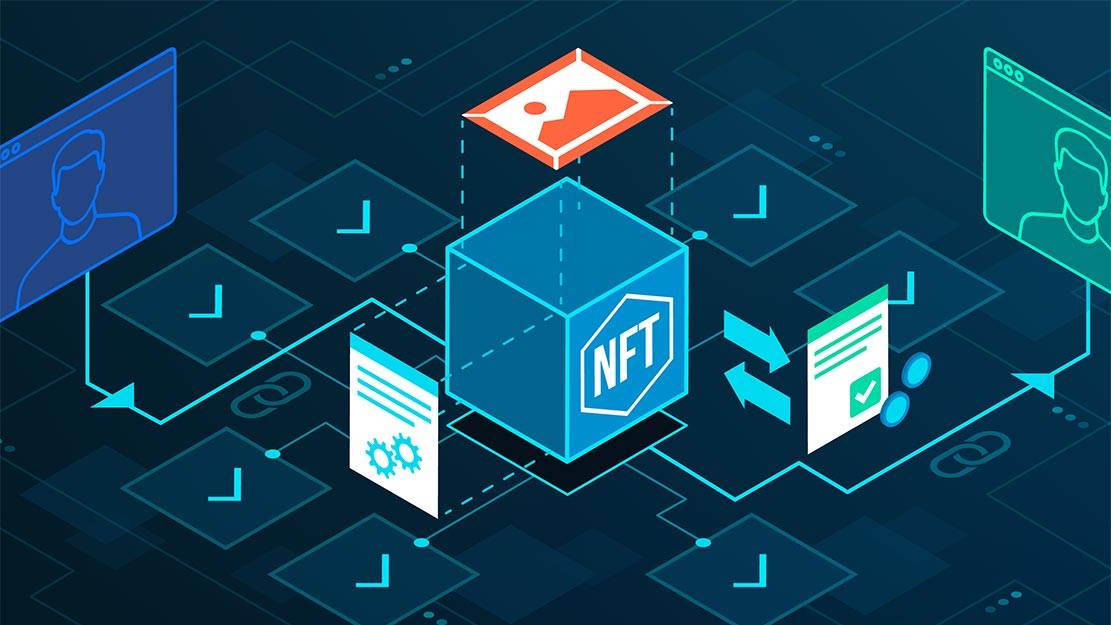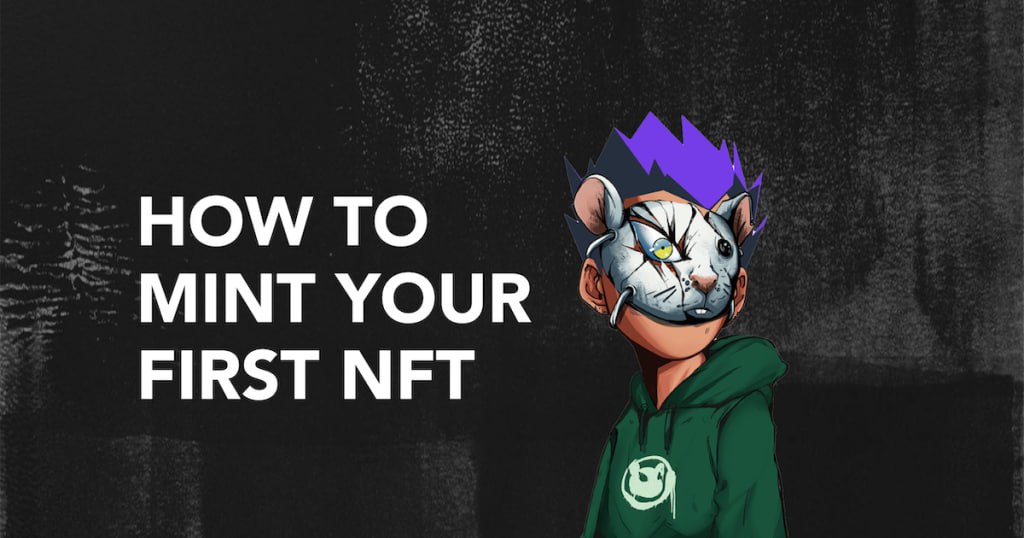Introduction to NFTs
Non-fungible tokens (NFTs) have created a considerable buzz in the digital world, transforming how we perceive and interact with digital art, gaming, music, and more. The rise of NFTs can be attributed to their uniqueness, rarity, and ability to establish ownership of digital assets. NFTs are essentially digital certificates of authenticity, proving a digital item's ownership and uniqueness.
The NFT market has grown exponentially, with millions of dollars spent on these digital assets daily. This has sparked the interest of creators, collectors, and investors alike, making NFTs a popular topic of conversation in the digital world. In this comprehensive guide from PlasBit, we will explore how to mint an NFT, its benefits, and the best practices to follow when creating and promoting an NFT.
How To Mint an NFT: What Is Minting?
Minting an NFT describes creating a unique digital token on a blockchain network. This token represents a digital asset, such as art, music, virtual real estate, or tweets. When you mint an NFT, you convert a digital item into a non-fungible token, which can be traded, bought, or sold across various NFT marketplaces.
Minting an NFT involves embedding metadata about the digital asset, such as the creator's name, the date of creation, and a description of the item, into the token itself. This metadata is stored on the blockchain, ensuring the information is secure, permanent, and cannot be tampered with. Al PlasBit, we believe it is essential for crypto users to understand both how NFTs are created and their various uses.
Benefits of Minting an NFT
There are several benefits of learning how to mint an NFT, both for creators and collectors. For creators, minting an NFT allows them to establish themselves as the original artist and maintain control over their digital assets. In addition, NFTs can be programmed with smart contracts to ensure the creator receives royalties every time the NFT is sold or transferred, providing a passive income stream.
For collectors, NFTs provide a novel way to invest in and collect digital art and other items. Since NFTs are unique and cannot be replicated, they can appreciate value over time, making them an attractive investment. Additionally, NFTs can be easily bought, sold, and traded on global marketplaces, providing liquidity and easy access to the digital art market.

How To Mint an NFT: Types of NFTs
While they are most commonly associated with the art world and collectibles, at PlasBit, we know that NFTs have many uses beyond just that.
One of the most popular NFT uses in gaming is where NFTs can represent in-game items. These could include weapons, armor, and even characters themselves. This allows players to own and sell their virtual assets to other players on secondary markets. NFTs in gaming also have the potential to generate novel revenue streams for game developers by allowing them to monetize their virtual assets. This produces a genuine incentive to learn how to mint an NFT.
The music industry is also starting to use NFTs to sell digital copies of music and videos. This allows musicians and artists to monetize their work in new ways and create unique experiences for their fans. For example, an artist could sell an NFT that gives the buyer exclusive access to a private concert or backstage pass.
Sports leagues and teams also get in on the NFT game, selling limited-edition digital collectibles to fans. These NFTs represent anything from a game-winning play to a behind-the-scenes look at the team's training facility. By learning how to mint an NFT and using them, sports organizations can create new revenue streams and engage with fans in new and exciting ways.
In the real estate industry, NFTs are used to tokenize properties and sell them as digital assets. This allows for more accessible and liquid real estate ownership, as buyers can purchase a fraction of a property through an NFT. It also opens up new opportunities for real estate developers to raise capital for projects and allows for more efficient trading of real estate assets.
Beyond these industries, NFTs have the potential to be used in a vast number of applications. For example, they could be used to represent ownership of intellectual property or to create unique digital identities for individuals. They could also be used in virtual reality, allowing for creating and owning digital assets within virtual worlds. This will undoubtedly lead to more and more people discovering how to mint an NFT.
As NFT use cases continue to expand, we at PlasBit expect to see more innovative ways of using this technology to create new opportunities for businesses and individuals. NFTs can revolutionize and overhaul how we think about ownership and digital assets, and the possibilities for their use are endless.
NFT Marketplace Overview
NFT marketplaces are specialist platforms where users buy, sell, and trade NFTs. Many also have information and education on how to mint an NFT. Some well-known NFT marketplaces include OpenSea, Rarible, and SuperRare. These platforms typically support a variety of NFT categories, such as art, music, gaming, virtual real estate, and collectibles.
When choosing an NFT marketplace, it's essential to consider factors such as the platform's popularity, supported blockchains, fees, and user experience. Additionally, some marketplaces cater to specific niches or types of NFTs, so selecting a platform that aligns with your goals and target audience is crucial.
How To Mint an NFT: Choosing the Right Blockchain
The first step in learning how to mint an NFT is selecting the blockchain network on which you want to create your token. The most popular blockchain for creating NFTs is Ethereum, which supports the widely used ERC-721 and ERC-1155 token standards. You can purchase, store, and send Ether (ETH) from your PlasBit crypto wallet. Other blockchains, such as Binance Smart Chain, Flow, and Tezos, also support NFT creation.
When selecting a blockchain, consider factors such as network fees, compatibility with popular NFT marketplaces, and the overall ecosystem for NFTs. In addition, when considering how to mint an NFT, each blockchain has pros and cons, so weighing up your options and selecting the one that best suits your requirements is vital.
Creating Your NFT
Once you have selected a blockchain, you can begin creating your NFT. This process typically involves:
1. Upload your digital asset (e.g., image, audio, or video file) to a decentralized storage platform like IPFS or Arweave. This ensures your digital asset is permanently and securely stored, even if the NFT marketplace goes offline.
2. Creating a smart contract that governs the rules and functionality of your NFT. This can include royalty payments, token metadata, and other customizable features.
3. Minting your NFT on the chosen blockchain involves embedding the digital asset's metadata and intelligent contract into a unique token. This is the final step in the process of how to mint an NFT.
Setting the Right Price for Your NFT
If learning how to mint an NFT is a steep learning curve, pricing an NFT can be challenging, as there is no one-size-fits-all approach. Factors that can influence the price of an NFT include the item's uniqueness, the creator's reputation, market demand, and the rarity of the token. As a result, some creators choose to set a fixed price, while others opt for an auction format, allowing the market to determine the value of the NFT.
When pricing your NFT, it's essential to conduct thorough research on similar items and consider the preferences of your target audience. Remember that the NFT market can be volatile, and prices fluctuate significantly over time. At PlasBit, we recommend keeping funds from your NFT sales safe, ideally in a separate crypto wallet or making regular transfers.
Promoting Your NFT
Promoting your NFT is crucial to attracting potential buyers and increasing the visibility of your digital asset. Some effective strategies for promoting your NFT recommended by our marketing experts at PlasBit include:
1. Leverage social media platforms like Twitter, Instagram, and Discord to share your NFT with a broader audience.
2. Collaborating with influencers, artists, or other creators in the NFT space to cross-promote each other's work.
3. Participating in online forums, communities, and events related to NFTs, how to mint NFTs, and digital art can help you connect with potential buyers and gain valuable insights.
Best Practices for How to Mint NFTs
To boost your chances of succeeding in the NFT market, it's essential to follow some best practices when deciding how to mint NFTs and sell them:
1. Ensure your digital asset is high-quality and unique for maximum exposure in the crowded NFT market.
2. Provide detailed and accurate metadata for your NFT, including a compelling description, to help potential buyers understand the value of your digital asset.
3. Consider the environmental impact of how to mint an NFT on energy-intensive blockchains, such as Ethereum, and explore more sustainable alternatives if necessary.
4. Stay informed about the current trends, developments, and regulations in the NFT space to make well-informed decisions and adapt to the evolving market landscape.
Future of NFTs: Environmental Impact
The increasing popularity of NFTs has raised questions about their environmental impact. NFTs, like other blockchain-based technologies, can require significant energy consumption to operate. This energy consumption comes from minting new tokens, which involves complex computations that require powerful computers to solve. This process can lead to a significant carbon footprint, as the energy needed when following how to mint an NFT can be equivalent to the electricity consumption of an average household for a month.
The environmental impact of NFT minting has led to concerns about the sustainability of the technology in the long term. As more artists, musicians, and creators turn to NFTs to monetize their work, the demand for NFT minting is only expected to increase. This could lead to a significant increase in energy consumption, which could harm the environment.
To address these concerns, some NFT platforms are exploring ways to reduce the environmental impact of how to mint an NFT and minting new tokens. One approach is to use renewable energy sources, such as solar or wind power, to power the computers used for minting. Another method is using more energy-efficient algorithms, which can reduce the energy required to mint a new token.
Our view at PlasBit is that, in the future, NFT platforms will likely continue to explore ways to reduce the environmental impact of minting new tokens. This will be an essential consideration as the use of NFTs becomes more widespread and the demand for minting increases. By taking a proactive approach to sustainability, NFT platforms can help ensure that this exciting new technology is used in a way that is both ethical and environmentally responsible.
Conclusion
Minting an NFT is an exciting opportunity for collectors, creators, and investors to participate in the rapidly growing digital asset market. Following the steps explained in our helpful PlasBit guide, you can successfully create, price, and promote your NFT while adhering to best practices in this dynamic and evolving space. As the NFT market matures, new opportunities, challenges, and innovations will undoubtedly arise for minting an NFT, making it an exciting time to be in the world of non-fungible tokens.







